The Forgotten City is an interesting little project. Like with some other games, The Stanley Parable, Team Fortress and Dota 2, The Forgotten City started off as a mod for another game, The Elder Scrolls V: Skyrim and then became a fully featured product. Sadly, unlike with some of those aforementioned other games, this process isn’t quite as smooth in its journey to becoming a real game.
The Forgotten City Review: Timelooping in Ancient Rome
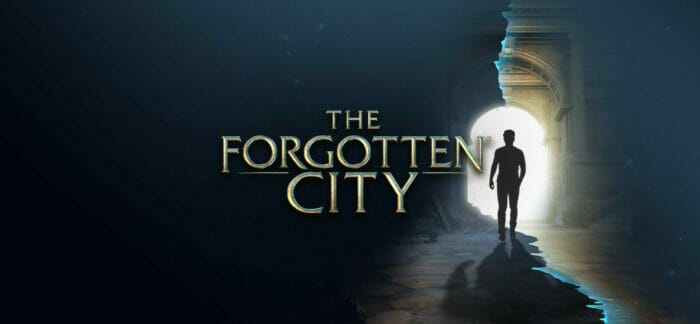
Title: The Forgotten City
Platform: PC, Xbox One, Xbox Series S/X, PlayStation 4, PlayStation 5 [Reviewed]
Genre: Puzzle Game, Timeloop Game
Publisher: Dear Villagers
Developer: Modern Storyteller
Players: 1
Release Date: July 29, 2021
Price: $24.99
Setup and The Golden Rule
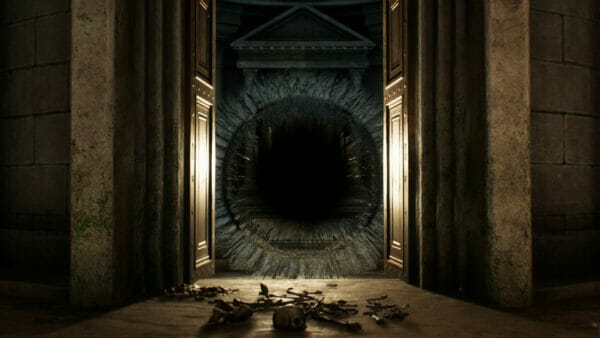
The Forgotten City tasks you with creating a character for you to play. You pick a name, your gender, and then your job (soldier, archaeologist, etc.) You awake on a riverbank and are told by the woman who rescued you that another guy has ventured into some long-forgotten ruins. She asks you to go find him. Naturally, you say yes, but when you enter the ruins yourself, you are thrown back 2,000 years into the times of Romans and Greeks and find yourself in a time loop.
Aside from being in a time loop, the entire town is under a curse known as The Golden Rule. Basically, if anyone commits a grievous sin, like murder or stealing, everyone in town will be turned into a golden statue. There are already dozens of statues of past townspeople scattered all around the city and now people are split about whether or not they should abide by the Golden Rule.
The Loops
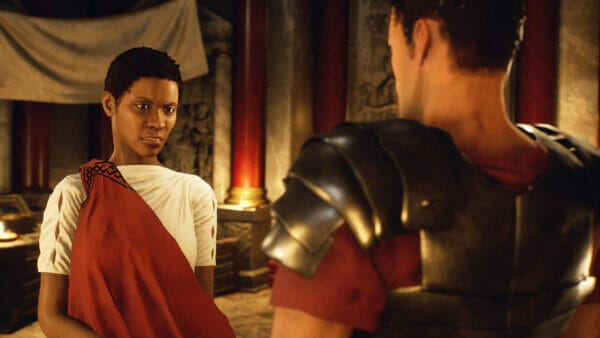
When you first come into the town you undertake a few overall tasks, mainly, figure out how to break the Golden Rule curse and how to get back to your own time. There are around two dozen or so smaller quests for you to do for the townspeople and they involve trying to find the Magistrate’s (mayor, basically) daughter, stopping threatening letters to a shopkeeper, to helping to cure someone’s Arthritis. It’s up to you, and some help from the time loops to help you solve these quests.
For example, one of the first early side quests involves one character eating Hemlock (a poison) to try and kill herself and the doctor is seen trying to heal her. In order To cure her, she needs an antidote but a merchant will only sell it at an exorbitant price due to its demand.
Here’s what you can do: steal the antidote. This of course, trips the Golden Rule so everyone starts turning into statues but you can also trip the time loop to return to the beginning. You keep your inventory from loop to loop so now on the next loop, the woman eats the Hemlock and the doctor can cure her at once. Quest solved. However, there are also untold consequences for resolving it as well.
A Clockwork Game
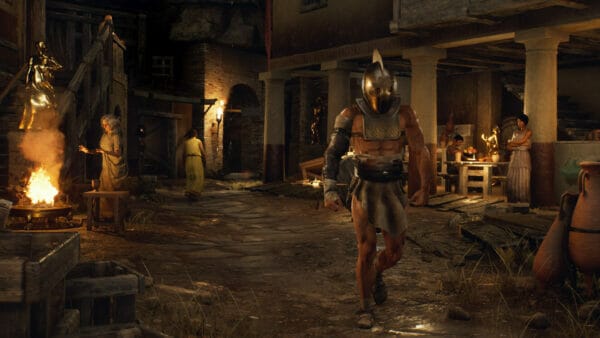
The Forgotten City’s structure is very much a clockwork experience. You can alter events but it’s a somewhat mechanical process. So if you see event A happening, you can either let it happen (B) or interfere (C) and then events D and E will spin-off from what you did or didn’t do.
It is very similar to the old game The Legend of Zelda: Majora’s Mask, for better or worse. Majora’s Mask had a much more rigid schedule, literally a ticking clock, so you would know when the Mailman would be in a zone from 2pm-3pm, or the shop would only be open from 8am to 8pm, and you also had a cracking journal to keep track of everything.
The Forgotten City doesn’t have this mechanic. In fact, it seems like most of the time, characters don’t start actually becoming animated until you get close enough to them. Some of them do kind of move around but most of the time they are generally locked to one position.
Technical Issues
As noted in the introduction, The Forgotten City is a mod based on the Skyrim Creation Engine. I really can’t tell if this game is built on that same engine, it actually does say Unreal Engine when you boot it up, but if that’s the case, why does it still function like Skyrim?
For example, let’s say you talk to someone and it has them walking from one place to another. While they are walking and you try to talk to them the game will basically say “This character is busy, please try again later.” This kind of breaks the illusion.
Another example is when you talk to someone, it does the Skyrim push-in on the face, so whomever you’re talking to is front and center. I’ve never really seen that done in an Unreal Engine game, it happens all the time in Creation Engine.
Aside from this, The Forgotten City doesn’t run particularly well. There are areas that the PlayStation 5 struggled to keep a good framerate, and certain high-energy sequences fall completely flat because of the game engine as well. There’s also at least one point in The Great Temple area that always triggers some horrible loading. It’s so consistent, you could almost time the steps. “OK, the load always happens 12 steps inside.
Good Character Work
I haven’t delved too deep into the actual story going on or the characters you meet because really, that is the meat of the game. There are around 15 or so characters to interact with and most of them are written really well. A few might not be the most fully-formed characters but on the whole, it’s a good cast of people for you to talk with and get to know.
Combat
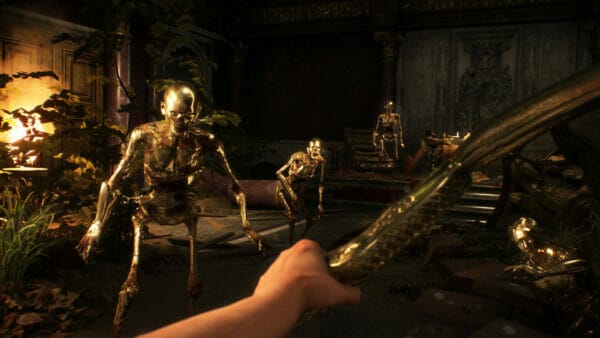
One of the weaker aspects of The Forgotten City is the combat. “Yes”, there is combat in the game and it’s not good. Thankfully, there are only two or three sequences of it. You are armed with a bow and arrow that turns enemies to gold The foes are the other gold statues (or subterranean people) who have become crazy. You can either shoot them in the head with one arrow or take two shots in the body.
It’s just not good. Drawing your bow takes longer than it should, the aiming is bad, and it just feels incredibly janky. You can do a few interesting tricks, like blocking off areas by shooting the curtains to be gold, or turning a bunch of enemies to gold if they are in a pool of water, but it is all something to be tolerated and never fun.
The bow and arrow do come into play with puzzle solving as well. This usually just involves you shooting arrows at vines or pools of algae to turn them into platforms for you to use but at least in this way, it is kind of clever in its uses.
Audio/Visual
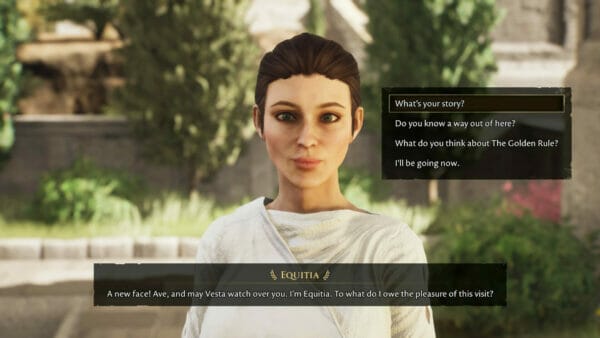
To its credit, The Forgotten City does look really nice, at least from a design perspective. The only place it really falters is in the faces, particularly women. One or two women have nice faces but some of them look like they got hit hard with the proverbial ugly stick. It’s not an indictment on their design, more the game engine just doesn’t render them well.
The voice acting is actually pretty decent. It’s full of mostly English actors who have likely never done any voice acting before, or at least I didn’t recognize anyone’s name in the credits. They all do a good job though and it’s always enjoyable to hear new people doing voice acting.
One Last (Awesome) Thing
The last thing I’ll mention is a gameplay system and it’s great. The first character you always encounter after a time loop is Galerius, an amenable farmer. On your first run of the game, he guides you to meet the main characters and shows you around a bit.
However, after a loop, you can talk to him and he can complete tasks for you, freeing you up from doing busywork. In that time loop example above, about rescuing a woman who ate Hemlock, after you cure her once, on the next run, you can just ask Galerius to do it for you and he will. This is so great since you’ll have to (likely) do numerous loops through the game and having him do the piddly stuff helps a lot.
This game was reviewed using a digital PS5 code provided by the publisher through a third-party PR company.
Final Thoughts
I may sound overly harsh in my review but that’s because The Forgotten City just has one or two things wrong with it that keeps it from being a standout game. Especially if the combat were better, or optional, or if certain things didn’t break, it would be an extremely easy recommendation. Even with some of the foibles, The Forgotten City is still a good little mystery/science fiction type of game. If you like a narrative-focused puzzle game, it’s well worth checking out.
